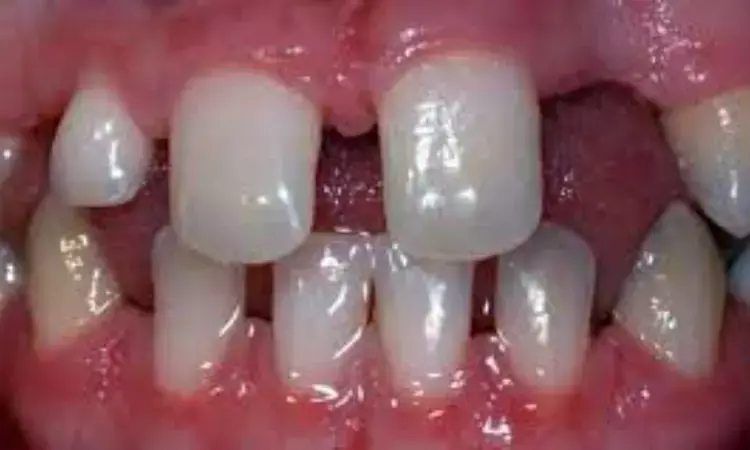- Home
- Medical news & Guidelines
- Anesthesiology
- Cardiology and CTVS
- Critical Care
- Dentistry
- Dermatology
- Diabetes and Endocrinology
- ENT
- Gastroenterology
- Medicine
- Nephrology
- Neurology
- Obstretics-Gynaecology
- Oncology
- Ophthalmology
- Orthopaedics
- Pediatrics-Neonatology
- Psychiatry
- Pulmonology
- Radiology
- Surgery
- Urology
- Laboratory Medicine
- Diet
- Nursing
- Paramedical
- Physiotherapy
- Health news
- Fact Check
- Bone Health Fact Check
- Brain Health Fact Check
- Cancer Related Fact Check
- Child Care Fact Check
- Dental and oral health fact check
- Diabetes and metabolic health fact check
- Diet and Nutrition Fact Check
- Eye and ENT Care Fact Check
- Fitness fact check
- Gut health fact check
- Heart health fact check
- Kidney health fact check
- Medical education fact check
- Men's health fact check
- Respiratory fact check
- Skin and hair care fact check
- Vaccine and Immunization fact check
- Women's health fact check
- AYUSH
- State News
- Andaman and Nicobar Islands
- Andhra Pradesh
- Arunachal Pradesh
- Assam
- Bihar
- Chandigarh
- Chattisgarh
- Dadra and Nagar Haveli
- Daman and Diu
- Delhi
- Goa
- Gujarat
- Haryana
- Himachal Pradesh
- Jammu & Kashmir
- Jharkhand
- Karnataka
- Kerala
- Ladakh
- Lakshadweep
- Madhya Pradesh
- Maharashtra
- Manipur
- Meghalaya
- Mizoram
- Nagaland
- Odisha
- Puducherry
- Punjab
- Rajasthan
- Sikkim
- Tamil Nadu
- Telangana
- Tripura
- Uttar Pradesh
- Uttrakhand
- West Bengal
- Medical Education
- Industry
Space opening a favoured orthodontic approach for hypodontia: Study

Space opening is the favoured orthodontic approach for hypodontia, according to a recent study published in the Journal of Orthodontics.
Hypodontia is one of the most common anomalies in dentistry. Hypodontia has a negative impact on oral health-related quality of life with patients best seen in a multidisciplinary clinic to improve treatment outcomes.
A group of researchers conducted a study to investigate the prevalence of hypodontia and its association with other dental anomalies, as well as malocclusion, and to investigate the treatment planned for patients attending the clinic and whether the type of missing teeth affected the proposed treatment.
Analysis of consecutive patients attending the hypodontia clinic at a dental hospital between February and November 2020. A total of 100 patients who met the inclusion criteria were identified. Data collected included the following: age/sex; number and type of missing teeth; pre-treatment occlusion; presence of other dental anomalies; and planned treatment.
Results of the study are:
A total of 100 patients (55% female; age range = 7–41 years; mean age = 18 years) were included. Of the cohort, 47% had a class I skeletal relationship and participants were significantly less likely to have a class III skeletal or incisor relationship; 45% had another dental anomaly with the most common being microdontia. Space opening was the preferred treatment option for those managed by orthodontic treatment with resin-bonded bridges most likely to be used for restoration of spaces, 86%.
Thus, the researchers concluded that the lower second premolars were the most commonly missing teeth. Participants were significantly less likely to have a class III incisor or skeletal relationship than class I or II. Space opening was the favoured approach for orthodontic treatment, particularly for maxillary lateral incisors.
Reference:
The prevalence and management of patients with hypodontia: A cross -sectional study by Nusaybah Elsherif et al. published in the Journal of Orthodontics.
https://journals.sagepub.com/doi/abs/10.1177/14653125211065457
Dr. Shravani Dali has completed her BDS from Pravara institute of medical sciences, loni. Following which she extensively worked in the healthcare sector for 2+ years. She has been actively involved in writing blogs in field of health and wellness. Currently she is pursuing her Masters of public health-health administration from Tata institute of social sciences. She can be contacted at editorial@medicaldialogues.in.
Dr Kamal Kant Kohli-MBBS, DTCD- a chest specialist with more than 30 years of practice and a flair for writing clinical articles, Dr Kamal Kant Kohli joined Medical Dialogues as a Chief Editor of Medical News. Besides writing articles, as an editor, he proofreads and verifies all the medical content published on Medical Dialogues including those coming from journals, studies,medical conferences,guidelines etc. Email: drkohli@medicaldialogues.in. Contact no. 011-43720751


